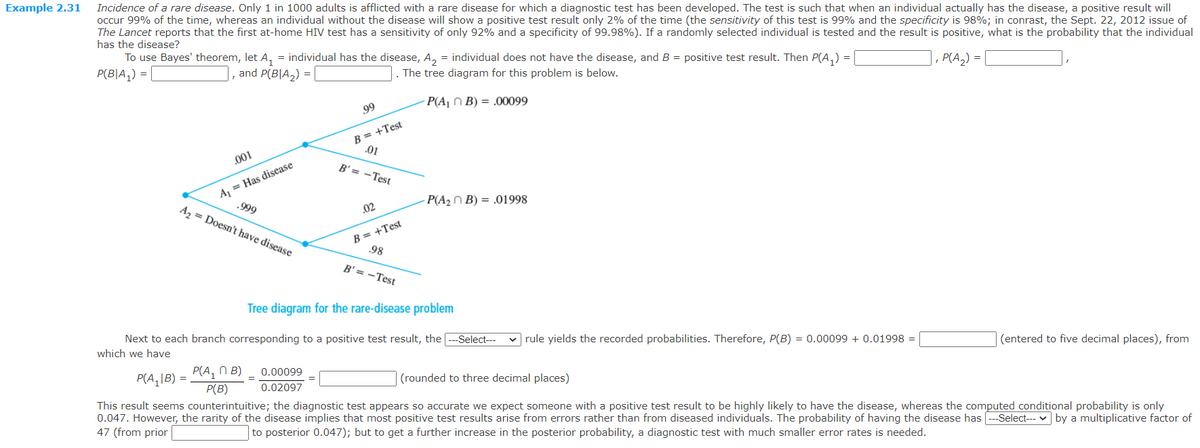Incidence of a rare disease. Only 1 in 1000 adults is afflicted with a rare disease for which a diagnostic test has been developed. The test is such that when an individual actually has the disease, a positive result will occur 99% of the time, whereas an individual without the disease will show a positive
Incidence of a rare disease. Only 1 in 1000 adults is afflicted with a rare disease for which a diagnostic test has been developed. The test is such that when an individual actually has the disease, a positive result will occur 99% of the time, whereas an individual without the disease will show a positive test result only 2% of the time (the sensitivity of this test is 99% and the specificity is 98%; in conrast, the Sept. 22, 2012 issue of The Lancet reports that the first at-home HIV test has a sensitivity of only 92% and a specificity of 99.98%). If a randomly selected individual is tested and the result is positive, what is the probability that the individual has the disease?
To use Bayes' theorem, let A1 = individual has the disease, A2 = individual does not have the disease, and B = positive test result. Then P(A1) = , P(A2) = , P(B|A1) = , and P(B|A2) = . The tree diagram for this problem is below.
Next to each branch corresponding to a positive test result, the (Answers to choose from in drop down menu are: subtraction, division, multiplication, addition) rule yields the recorded probabilities. Therefore, P(B) = 0.00099 + 0.01998 = (entered to five decimal places), from which we have
| P(A1 ∩ B) |
| P(B) |
| 0.00099 |
| 0.02097 |
This result seems counterintuitive; the diagnostic test appears so accurate we expect someone with a positive test result to be highly likely to have the disease, whereas the computed conditional probability is only 0.047. However, the rarity of the disease implies that most positive test results arise from errors rather than from diseased individuals. The probability of having the disease has (Options for drop down menu are: Increased, Decreased) by a multiplicative factor of 47 (from prior ? to posterior 0.047); but to get a further increase in the posterior probability, a diagnostic test with much smaller error rates is needed.

Trending now
This is a popular solution!
Step by step
Solved in 3 steps with 3 images






